Why is this stretch of parkway in east Tennessee so popular, anyway? It has occurred to me that I have not laid out the reasons for the popularity and tourist-ness of Gatlinburg and Pigeon Forge in case there are those out there that don’t know.
In short, Americans have an irresistible urge to build Bavarian-like villages near big mountains, sort of like a poor man’s Alps. For example, Helen, GA in the Blue Ridge Mountains, Leavenworth, WA in the Cascade Mountains, even Fredericksburg, TX in the Texas Hill Country. And in Tennessee, we have the Great Smoky Mountains so naturally, we need lightly German-themed entertainment nearby.
GREAT SMOKY MOUNTAIN NATIONAL PARK
It all starts with the Great Smoky Mountains, a subrange of the Appalachian Mountains. A little over 800 square miles were set aside as the Great Smoky Mountains National Park in 1934 in Tennessee and Georgia, containing around 400 miles of roadways and over 800 miles of hiking trails. These range from easy creekside jaunts to 16-mile loops, and 72 miles of the popular Appalachian Trail.
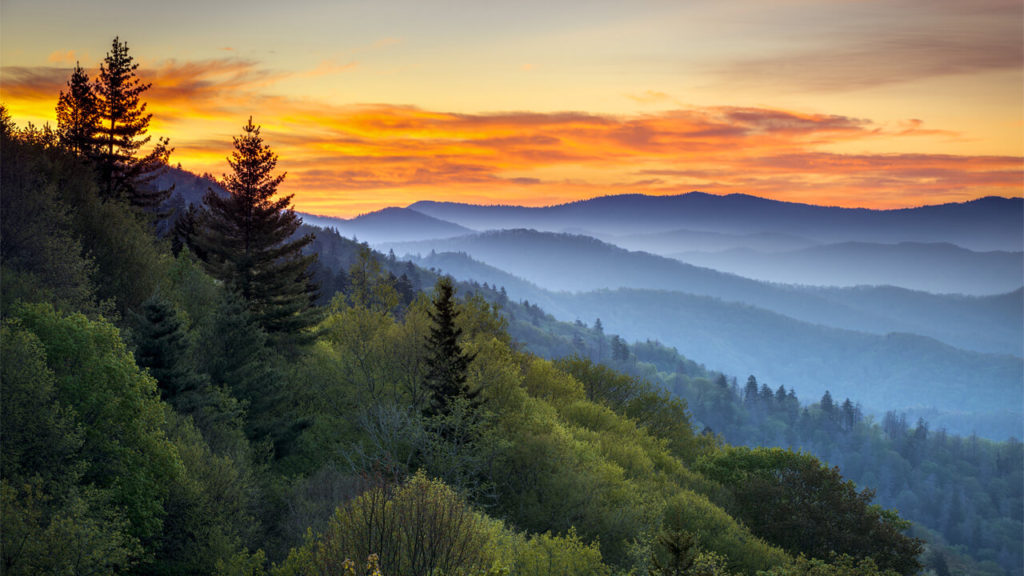
Driving
The main road meanders 32 miles through the width of the park, connecting Gatlinburg, TN, and Cherokee, NC.
A fun road trip from Chattanooga is to drive through the mountains from Maryville, TN, towards Pigeon Forge, through Gatlinburg, through the park to Cherokee, then drive the twisted Cherohala Skyway and back towards your destination.
Another fun loop is from Pigeon Forge, bypassing Gatlinburg and driving down Little River Road, stopping through the ghost town of Elkmont, the original tourist destination of the Smokies. Then towards Laurel Creek Road and driving the loop around Cades Cove before heading north along the Rich Mountain Road and into Townsend, then back through Wear Valley and Pigeon Forge.
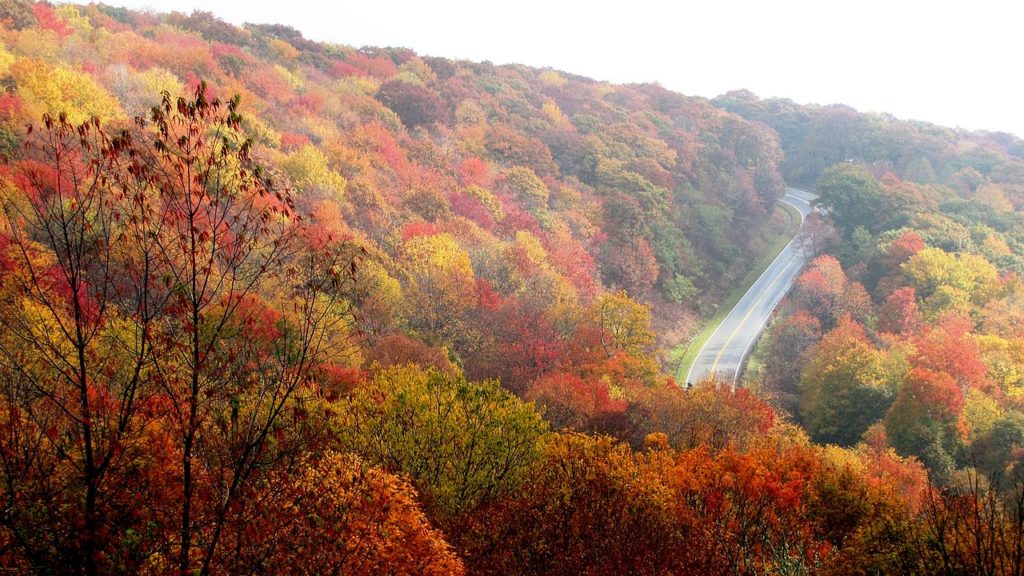
Hiking
For a walk in the woods, there are enough trails to cater to children and novices to experienced day and overnight hikers. Four trails to waterfalls are between .6 and 2.3 miles round trip. At the other end of the spectrum, you could hike up almost 4000 feet to Mt. LeConte and stay in the lodge.
At 6,643 feet Clingman’s Dome is the highest point in the park, the highest point in Tennessee, the highest point on the Appalachian Trail, and the second highest peak east of the Mississippi River. And yet it is easily accessible by car and a short hike up a broad paved trail to an observation tower.
To choose your hikes based on length, difficulty, and what features you would like to visit (i.e. waterfalls, scenic views, old growth forests), check out this website for a detailed breakdown.
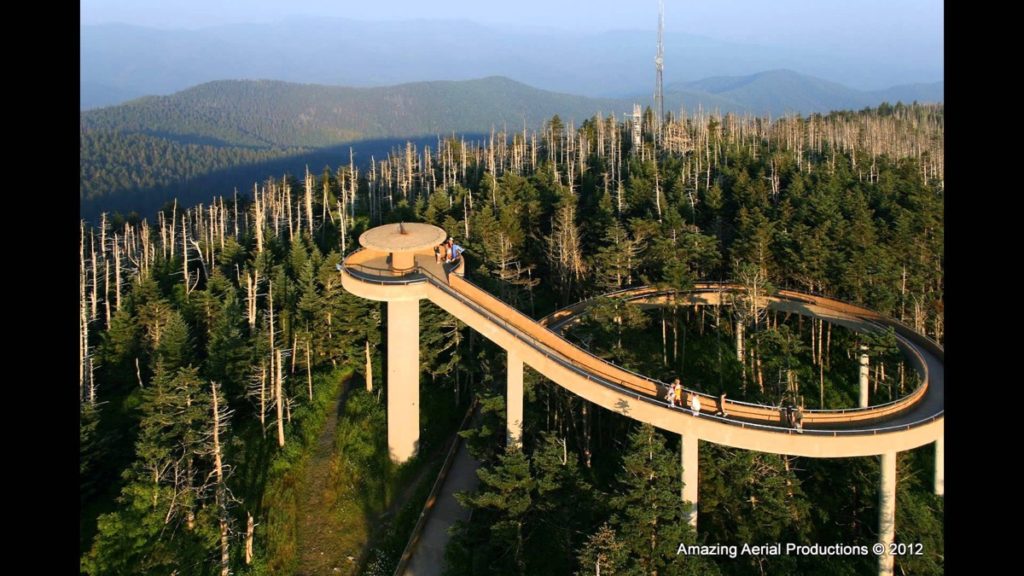
GATLINBURG
With over 10 MILLION visitors a year, Great Smoky Mountain National Park is the most-visited national park in the United States. So naturally, you can find a multitude of lodging, dining, and entertainment options beginning right outside the park gates.
The biggest of these is Gatlinburg, situated as it is nearer to Knoxville and named for its first postmaster in 1856. The rural town exploded when the national park was formed, eventually turning into what we see today–a collection of lodges, hotels, restaurants, tacky tourist shops and attractions ranging from amazing to deeply quirky.
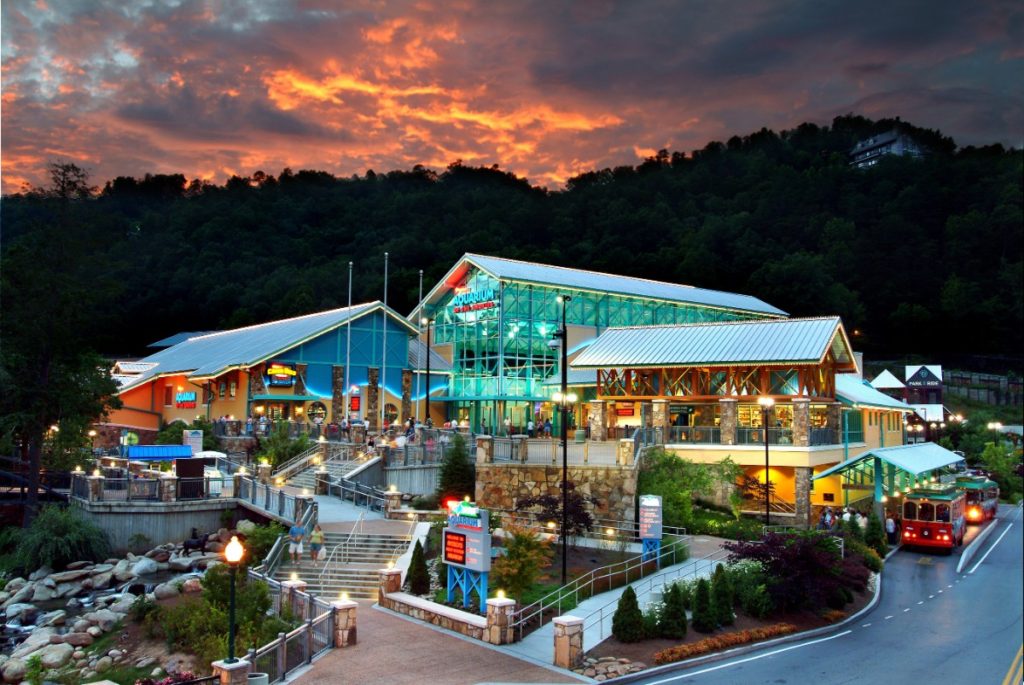
And while I joke about the American need to remain European, there are really only a few touches of Germany here and there in Gatlinburg. You’ll find it especially around places like the Pancake Pantry and The Village. You’ll find just as many “hillbilly” references, from the excellent Hillbilly Golf to the half-dozen moonshine distilleries that have popped up in town.
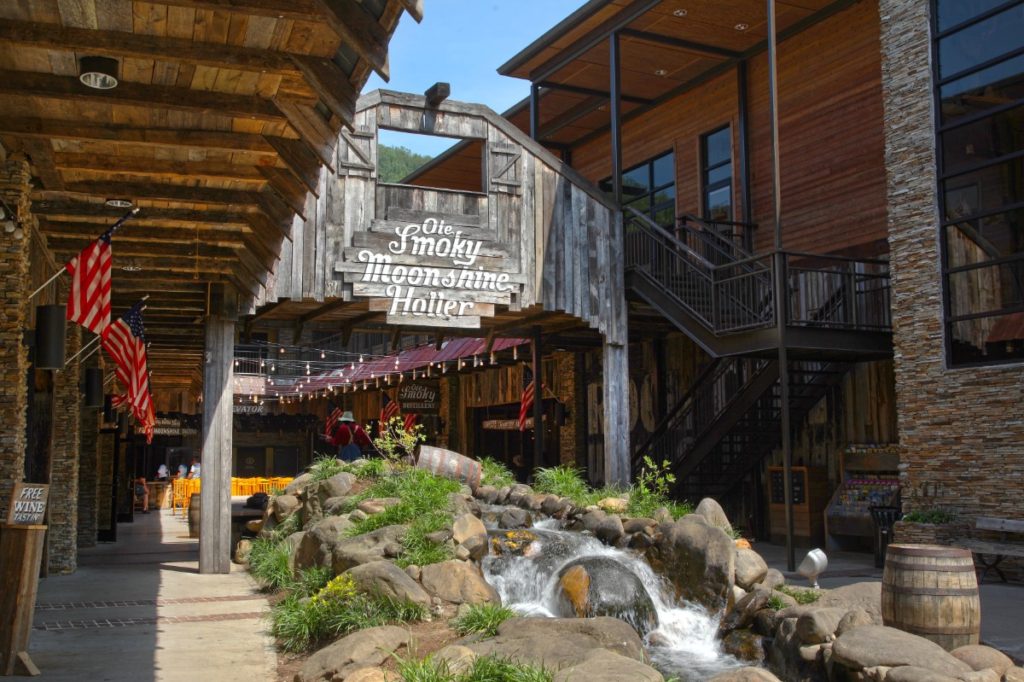
PIGEON FORGE
Since Gatlinburg is hemmed in by ridges on all sides, tourism began expanding in the 60’s towards Pigeon Forge to the north. Here, the focus is more on southern culture and getting those tasty tourist dollars.
The first attraction in Pigeon Forge was the Rebel Railroad in 1961. A ” simulated a ride on a Confederate steam train that was under attack by Union soldiers during the Civil War”, this area would eventually become Dollywood, Tennessee’s premier amusement park.
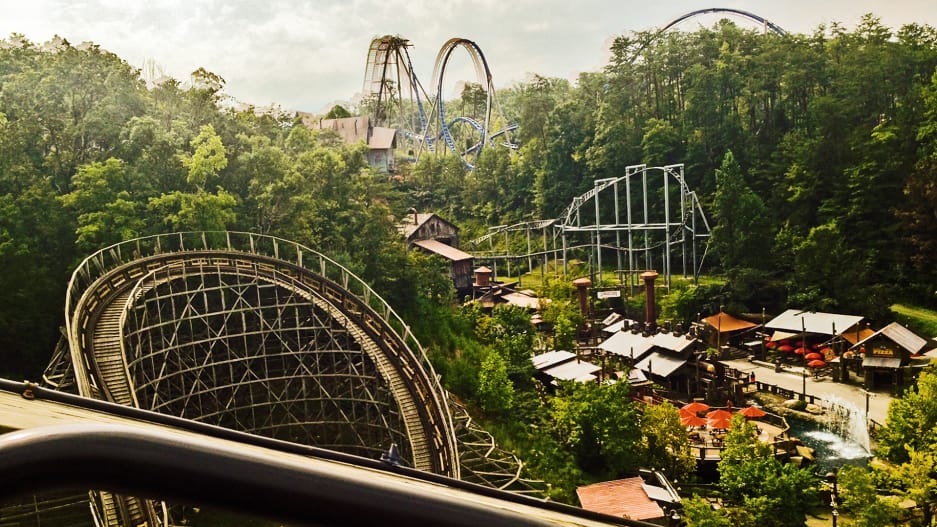
Elsewhere along the parkway, you’ll find hotels, fudge, ice cream, pancakes, race tracks, mini golf, outlet shopping, huge attractions and huge disappointments. I really like the mountain coasters.
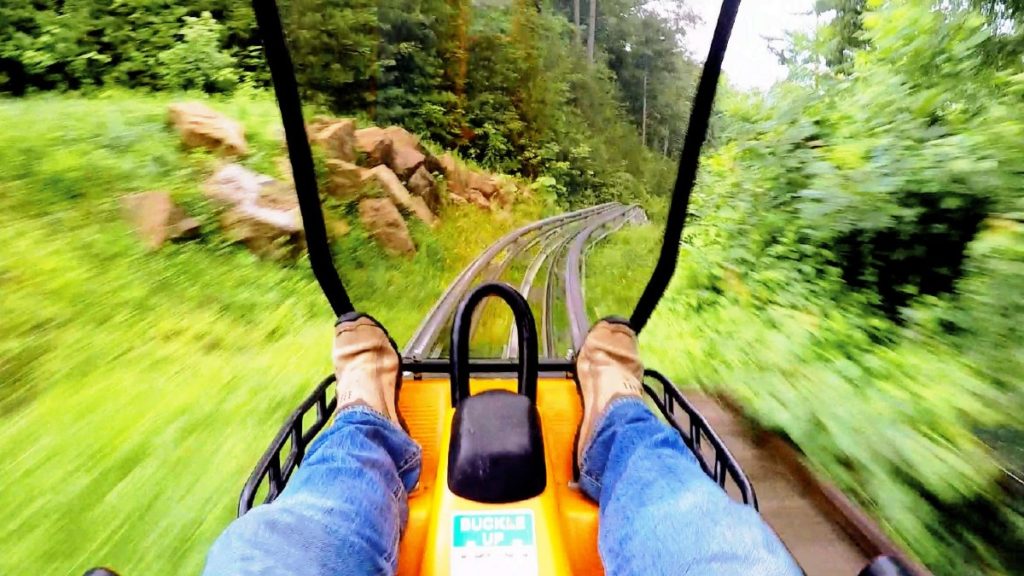
My favorite areas of town are The Island shopping, dining, and entertainment district, and the Old Mill area. It’s sort of an old-school, new-school Pigeon Forge dichotomy.
An ideal day in Pigeon Forge might include lunch at the Pottery House Cafe and Grille with shopping in the immediate area. I like A Long Story Short, Hikey Mikey, Misty Mountain Soap, and Pigeon River Pottery (and we won’t talk about how much I like the tiger butter fudge in the Candy Kitchen.) A few mountain coasters, a round of mini golf, then dinner in The Island, a sunset ride on The Great Smoky Mountain Wheel and ice cream by the dancing fountains at dusk.
Sevierville
The attractions of Pigeon Forge stretch north to Sevierville, a sweet town worth exploring all on its own. Staying in Sevierville is a worthwhile option, too–it’s only about 15 minutes to Dollywood from there and around 30-60 minutes into the GSMNP, depending on which route you take.
Shopping opportunities are plentiful along the entire length of the Winfield Dunn Parkway all the way north to I-40, and by that time, you’re practically in Knoxville. I do recommend checking out the back room at the Russell Stover store, near the I-40 junction. That’s where they keep the discounted chocolate!
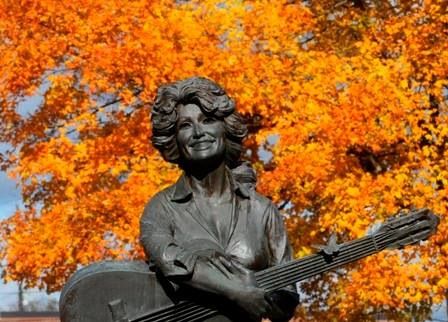
Cherokee, NC
On the south side of the GSMNP is the small town of Cherokee, with its native American attractions, shops, and entertainment. The biggest draw here is the Harrah’s Cherokee Casino Resort. Here you are close to the Blue Ridge Parkway, some lovely ridge and mountain drives, not to mention all the trails that are on that side of the park, including many of the waterfalls.
And while it may not have the offerings of the north side of the park, it may be worth looking into for the peace and quiet of the original attraction, the mountains.
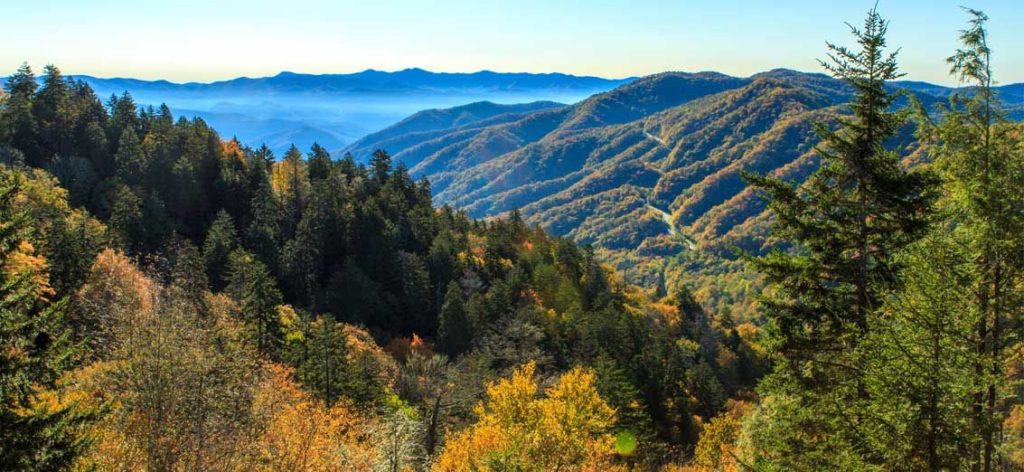
Nice 🙂 Gatlanberge is quite a place!